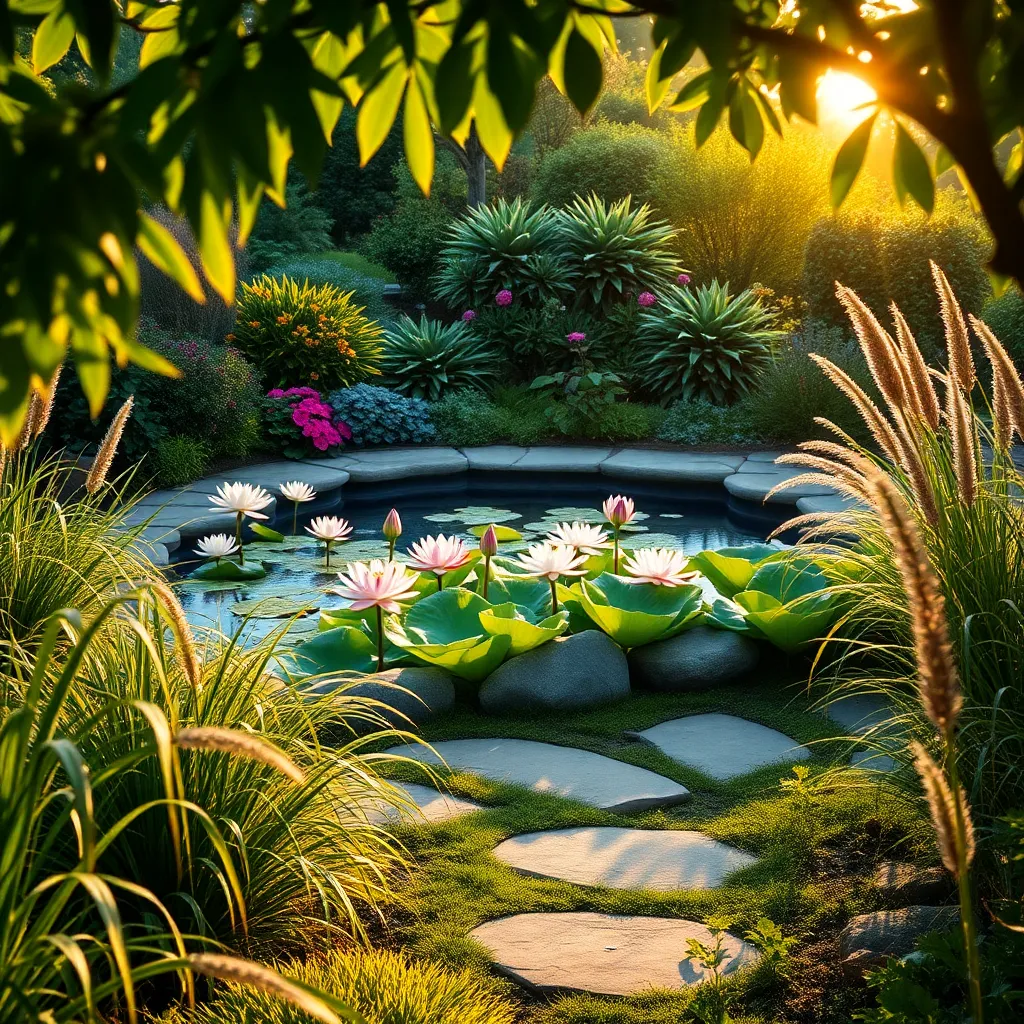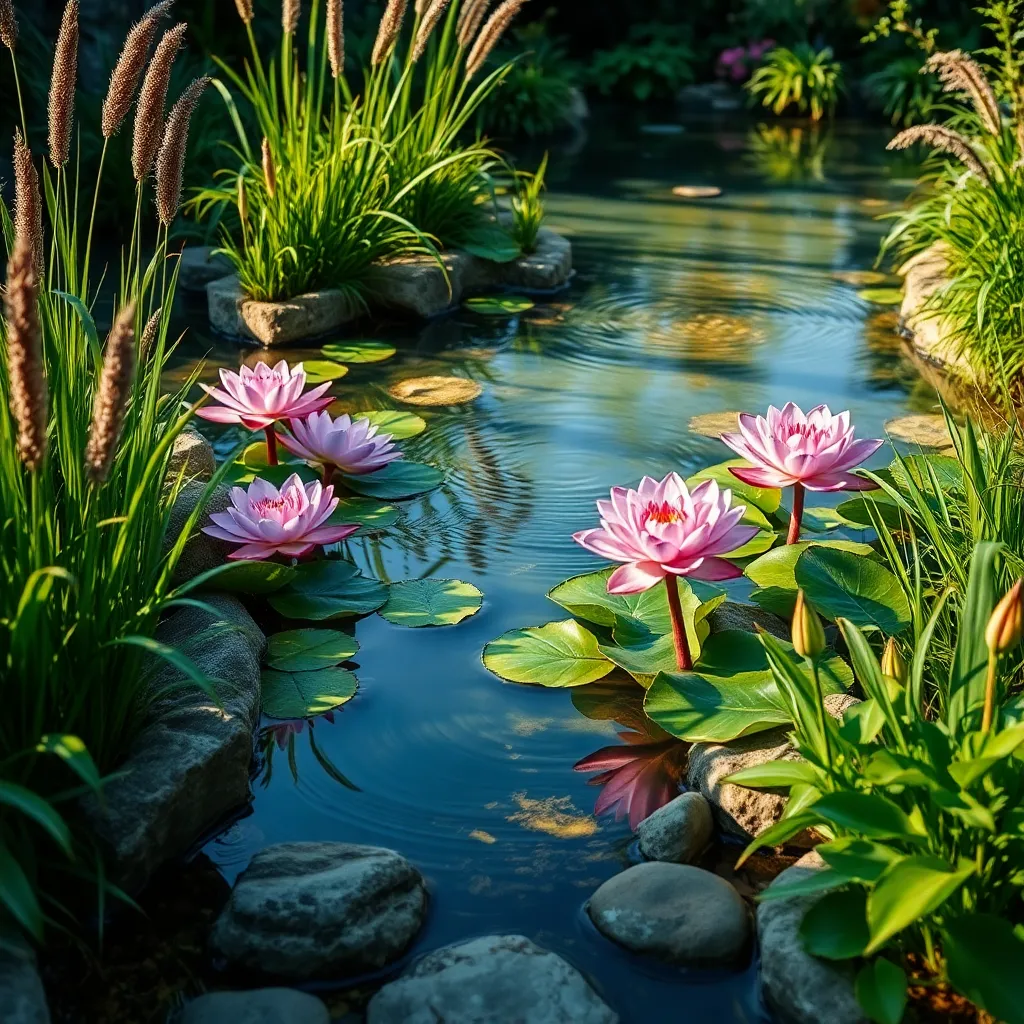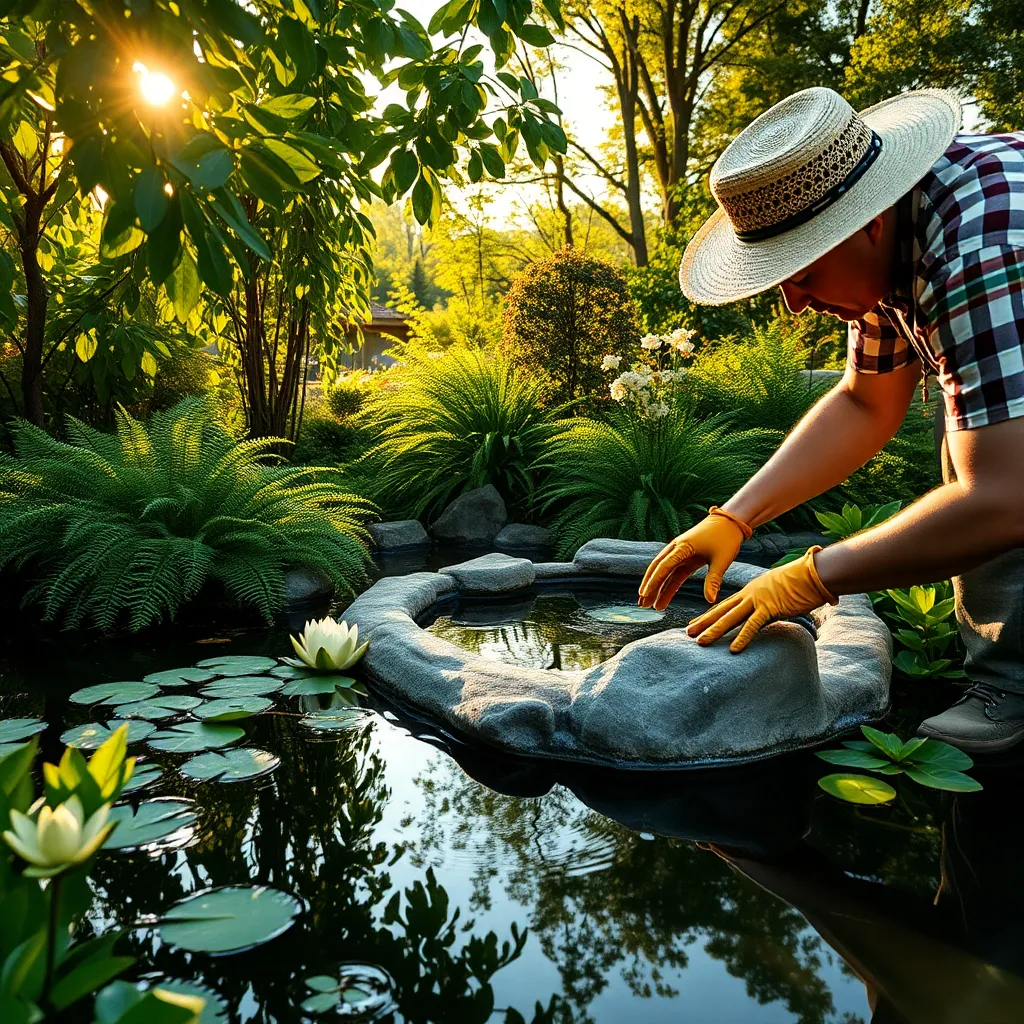Imagine stepping into your backyard and being greeted by the soothing sounds of gently flowing water, the graceful dance of koi fish, and the serene beauty of water lilies in full bloom. Designing a water garden offers a unique opportunity to transform any outdoor space into a tranquil oasis, captivating both the senses and the soul. Whether you’re a novice gardener eager to try something new or a seasoned green thumb seeking to expand your horticultural horizons, a water garden can be a rewarding project that enriches your landscape in countless ways.
Water gardens have the magical ability to blend art with nature, creating a living masterpiece that evolves with the seasons. In this article, you’ll discover the essentials of designing a water garden, from selecting the perfect spot and choosing the right plants to incorporating water features that enhance the natural beauty of your space. With practical tips and creative ideas, you’ll gain the confidence to craft a water garden that reflects your personal style and meets the needs of your environment.
For beginners, this guide will demystify the process, breaking down each step into manageable parts so you can dive into your project with enthusiasm. Experienced gardeners will find inspiration to refine their designs, exploring advanced techniques and innovative ideas that push the boundaries of traditional garden spaces. By the end, you’ll not only have a clear vision of how to bring your water garden to life but also the knowledge to maintain its beauty and vitality for years to come.
Select an Ideal Garden Location

Choosing the right location for your water garden is crucial to its success. Ensure the spot receives at least six hours of sunlight daily, as most aquatic plants thrive in sunny conditions.
Consider the proximity of your water garden to other features in your yard. Placing it near a seating area can enhance relaxation, allowing you to enjoy both the visual and auditory beauty of water.
When selecting a site, avoid low-lying areas that may flood during heavy rain. Excessive water can disrupt the balance of your water garden, potentially harming plants and fish.
It’s important to think about access to electricity if you plan on using a pump or fountain. Having a nearby outdoor outlet will make installation and maintenance easier.
Plan the Water Garden Layout

Designing a water garden layout requires thoughtful planning to maximize both aesthetics and functionality. Start by envisioning the overall shape and size of your water feature, keeping in mind the natural flow of your existing garden space.
Positioning is crucial, so ensure your water garden receives the right amount of sunlight to support aquatic plants. Most aquatic plants thrive in full sun, but some, like water lilies, prefer partial shade for part of the day to prevent overheating.
Consider incorporating a mix of plant types to create a balanced ecosystem. Marginal plants, like irises and cattails, should be placed at the water’s edge, while floating plants, such as duckweed and water hyacinths, can spread across the surface.
To maintain healthy water quality, introduce oxygenating plants like hornwort or anacharis. These plants not only help prevent algae growth but also provide a habitat for beneficial microorganisms and aquatic life.
Advanced Tip: Integrating a small waterfall or fountain can enhance aeration and add soothing sounds to your garden. This feature not only elevates the visual appeal but also promotes a healthier environment for fish and plants by increasing oxygen levels in the water.
Choose Suitable Aquatic Plants

Choosing suitable aquatic plants is crucial to creating a thriving water garden. Start by considering the depth of water where you plan to plant, as different species thrive at varying water levels.
Floating plants like water lilies and duckweed are ideal for deeper areas. They not only add beauty but also help maintain water quality by providing shade and reducing algae growth.
Submerged plants, such as hornwort and anacharis, are excellent oxygenators and should be planted in the middle to deep sections. These plants play a vital role in balancing the ecosystem by supplying oxygen to the water and providing shelter for aquatic life.
Marginal plants like irises and cattails thrive in shallow water at the pond’s edge. They require periodic thinning to prevent overcrowding and can be planted in loamy soil for optimal growth.
For beginner gardeners, starting with hardy species that tolerate a range of conditions is advisable. Advanced gardeners might explore exotic aquatic plants, ensuring they are non-invasive to maintain ecological balance.
Install Water Features Carefully

Installing water features in your garden can greatly enhance its aesthetic appeal, but it’s crucial to plan their placement carefully. Consider the size and scale of your water feature in relation to your garden’s overall design to ensure a harmonious balance.
Start by selecting a suitable location away from large trees to prevent debris from accumulating in the water. Ensure that the chosen spot receives adequate sunlight, as sunlight is essential for the health of aquatic plants and the overall ecosystem of your water garden.
Next, think about the type of water feature that fits your garden’s style and your maintenance preferences. Fountains, ponds, and small waterfalls each have different installation requirements, so research the specific needs of your chosen feature thoroughly.
Once you have determined the location and type of water feature, focus on the practical aspects of installation. Use a level to ensure that your water feature is perfectly horizontal, preventing uneven water flow or overflow issues.
For those considering a pond, lining the base with a high-quality pond liner is crucial to prevent water leakage into the soil. Keep in mind that regular maintenance, such as removing algae and checking the water pump, will be necessary to keep your water feature in optimal condition.
Finally, integrate your water feature with the rest of your garden for a cohesive look. Surround it with rocks, aquatic plants, and decorative elements to create a natural appearance that blends seamlessly with your garden’s existing landscape.
Maintain Water Quality Regularly

Maintaining water quality is crucial for a thriving water garden, as it directly affects plant and fish health. Begin by testing your water regularly to monitor parameters such as pH, ammonia, and nitrate levels; you can use a basic water testing kit available at most garden centers.
Introduce a mix of plants to your water garden, as they help balance the ecosystem by absorbing excess nutrients and providing shade. Select a combination of submerged, floating, and marginal plants like water lilies, water hyacinths, and cattails to naturally filter the water.
To prevent the buildup of algae, which can cloud the water and deprive plants of sunlight, consider installing a UV clarifier. This device uses ultraviolet light to kill free-floating algae, keeping your water crystal clear and healthy for aquatic life.
Advanced gardeners can install a biological filter system to support beneficial bacteria that break down organic waste. This setup helps maintain a stable environment by converting harmful ammonia into nitrates that are less toxic to fish and plants.
Conclusion: Growing Success with These Plants
As we’ve explored in “How to Design a Water Garden,” the journey to nurturing a flourishing relationship parallels the art of cultivating a serene water garden. First, we learned the importance of a strong foundation, akin to choosing the right location for your garden. Next, we discussed the significance of balance, much like selecting the right mix of plants and aquatic life. Third, we emphasized the need for consistent maintenance, reflecting the regular care relationships require to thrive. Fourth, we highlighted adaptability, the ability to adjust to changes, just as one would with seasonal shifts in a garden. Lastly, we celebrated the joy of shared experiences, akin to enjoying the tranquility and beauty of a well-tended garden together.
As an immediate step, identify one area in your relationship that could use a little more attention, whether it’s communication, quality time, or support, and take action today. Save or bookmark this article as your go-to guide for when you need a gentle reminder of these principles. Remember, just like a water garden, your relationship can become a source of peace and joy with the right care. Embrace this opportunity to cultivate connection and watch as your relationship blossoms into something truly beautiful.
